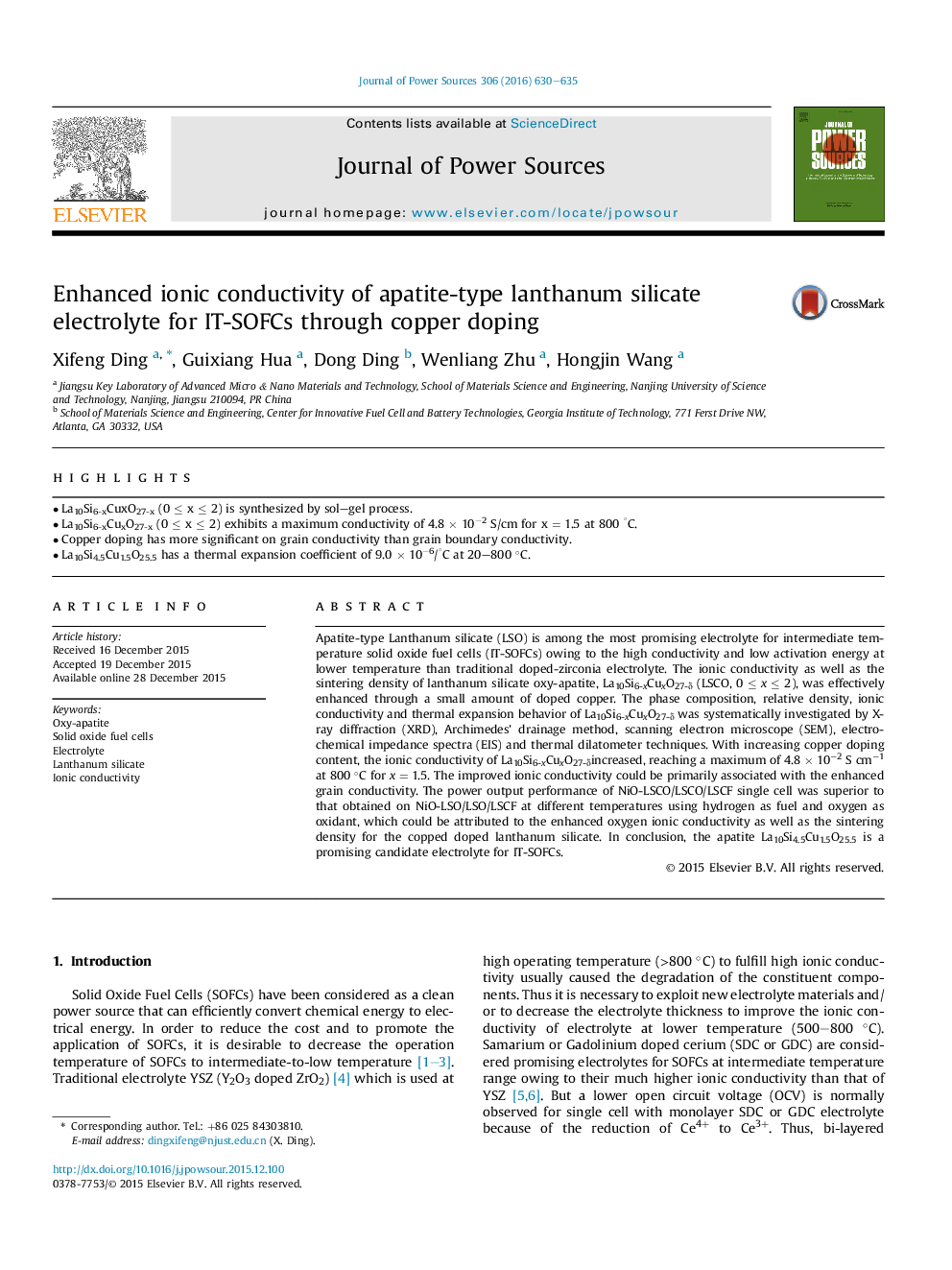| Article ID | Journal | Published Year | Pages | File Type |
|---|---|---|---|---|
| 1292345 | Journal of Power Sources | 2016 | 6 Pages |
•La10Si6-xCuxO27-x (0 ≤ x ≤ 2) is synthesized by sol–gel process.•La10Si6-xCuxO27-x (0 ≤ x ≤ 2) exhibits a maximum conductivity of 4.8 × 10−2 S/cm for x = 1.5 at 800 °C.•Copper doping has more significant on grain conductivity than grain boundary conductivity.•La10Si4.5Cu1.5O25.5 has a thermal expansion coefficient of 9.0 × 10−6/°C at 20–800 °C.
Apatite-type Lanthanum silicate (LSO) is among the most promising electrolyte for intermediate temperature solid oxide fuel cells (IT-SOFCs) owing to the high conductivity and low activation energy at lower temperature than traditional doped-zirconia electrolyte. The ionic conductivity as well as the sintering density of lanthanum silicate oxy-apatite, La10Si6-xCuxO27-δ (LSCO, 0 ≤ x ≤ 2), was effectively enhanced through a small amount of doped copper. The phase composition, relative density, ionic conductivity and thermal expansion behavior of La10Si6-xCuxO27-δ was systematically investigated by X-ray diffraction (XRD), Archimedes' drainage method, scanning electron microscope (SEM), electrochemical impedance spectra (EIS) and thermal dilatometer techniques. With increasing copper doping content, the ionic conductivity of La10Si6-xCuxO27-δincreased, reaching a maximum of 4.8 × 10−2 S cm−1 at 800 °C for x = 1.5. The improved ionic conductivity could be primarily associated with the enhanced grain conductivity. The power output performance of NiO-LSCO/LSCO/LSCF single cell was superior to that obtained on NiO-LSO/LSO/LSCF at different temperatures using hydrogen as fuel and oxygen as oxidant, which could be attributed to the enhanced oxygen ionic conductivity as well as the sintering density for the copped doped lanthanum silicate. In conclusion, the apatite La10Si4.5Cu1.5O25.5 is a promising candidate electrolyte for IT-SOFCs.
